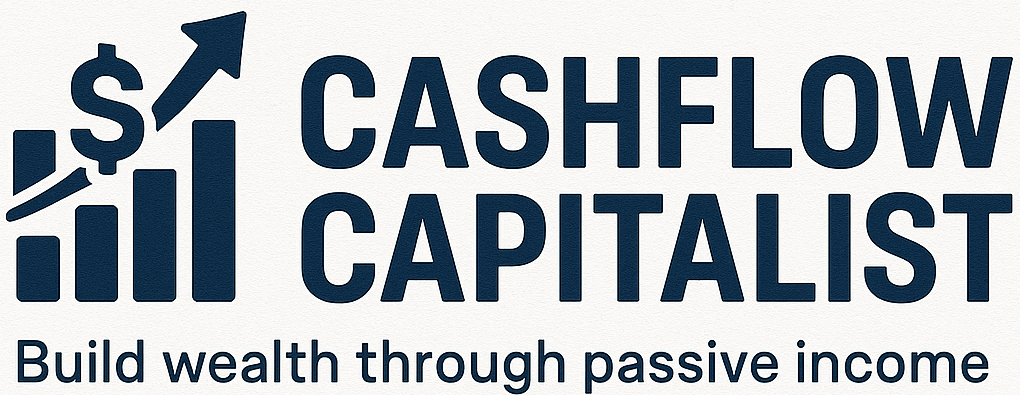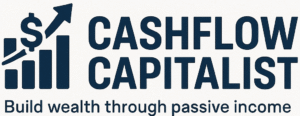How to Live Off Dividends in Retirement: A Step-by-Step Guide to Building a Reliable Income Stream
Imagine having a steady income without using up your savings. This is what living off dividend income in retirement offers. By investing in dividend-paying stocks, you can get a consistent income to cover your expenses.

A well-diversified portfolio is essential for a steady income in retirement. With a dividend investing strategy, you can create a reliable income. This helps you retire comfortably and confidently in Canada.
Key Takeaways
- Understand how dividend investing can provide a steady income stream in retirement.
- Learn how to build a diversified portfolio for sustainable income.
- Discover the benefits of a dividend income strategy for retirement.
- Explore tax-efficient ways to optimize your dividend income.
- Develop a step-by-step plan to achieve a reliable income stream.
Understanding the Fundamentals of Dividend Investing for Retirement
To live off dividends in retirement, you need to understand dividend investing. It’s about buying shares of companies that give some of their earnings to shareholders. This gives you a steady income without using up your savings.
What Makes Dividends an Attractive Retirement Strategy
Dividends are attractive for retirement because they offer a stable income. Many big companies pay dividends regularly. Investing in dividend-paying stocks or funds can be a reliable way to generate income in your retirement years.
The Power of Dividend Growth for Long-Term Income
Dividend growth investing is about companies that increase their dividend payouts over time. This can make your income grow, keeping up with inflation. By investing in companies with a history of dividend growth, you can create a more sustainable income stream.
Setting Realistic Dividend Income Goals
Setting realistic dividend income goals is key to a good retirement strategy. You need to figure out how much income you need each year.

This involves looking at your retirement costs, other income sources, and the dividend yield of your investments.
Building Your Dividend Portfolio to Live Off Dividends in Retirement
To live off dividends in retirement, you need a dividend portfolio that gives a steady income. This means figuring out your annual income needs, how much money you’ll need, and creating a diverse portfolio.
Calculating Your Annual Income Needs
First, figure out how much money you’ll need each year in retirement. Think about your living costs, travel plans, and other financial duties. For example, if you plan to travel a lot, you might need more money for those trips. It’s key to make a budget that covers all your retirement needs.
Determining How Much Capital You’ll Need
After knowing your annual income needs, figure out how much money you’ll need to start. A good rule is to aim for a 4% to 6% dividend yield for a steady income. For instance, if you need $50,000 a year, you’ll need a portfolio worth between $833,333 and $1,250,000, based on a 4% to 6% yield.
Example: Generating $40,000-$60,000 Annually
Let’s say you need to make between $40,000 and $60,000 a year. Use the table below to see how much money you’ll need for different dividend yields:
| Dividend Yield | Required Capital for $40,000 Annual Income | Required Capital for $60,000 Annual Income |
|---|---|---|
| 4% | $1,000,000 | $1,500,000 |
| 5% | $800,000 | $1,200,000 |
| 6% | $666,667 | $1,000,000 |
Creating a Diversified Dividend Portfolio
It’s important to have a diverse dividend portfolio to reduce risk and increase returns. You can do this by investing in a mix of Canadian dividend stocks and dividend-focused ETFs. A diverse portfolio helps you handle market ups and downs and keeps your income steady.

As a financial expert said, “A diversified portfolio is key to long-term success in dividend investing.”
“The key to successful dividend investing is to create a portfolio that is diversified across various asset classes and sectors, ensuring that you are not overly exposed to any one particular stock or industry.”
Selecting the Right Dividend Investments for Reliable Income
Finding the right dividend stocks and ETFs is key for a good retirement strategy. You need to look at each stock and compare ETFs to make smart choices.
Evaluating Individual Dividend Stocks
Look at a stock’s dividend history, payout ratio, and financial health. Canadian Dividend Aristocrats are good choices because they’ve raised their dividends for years.
Canadian Dividend Aristocrats Worth Considering
Some top Canadian Dividend Aristocrats are:
- Royal Bank of Canada
- Toronto-Dominion Bank
- Enbridge Inc.
These companies are great for retirees because they pay consistent dividends.
Comparing Canadian Dividend ETFs
ETFs offer a mix of stocks, which can lower risk. When looking at Canadian ETFs, check their fees, what they hold, and their dividend yield.
Analysis of ZWC, CDZ, ZDV, and HXT
Here’s a look at some popular Canadian dividend ETFs:
| ETF | Dividend Yield | MER | Underlying Holdings |
|---|---|---|---|
| ZWC | 4.2% | 0.17% | Canadian dividend-paying stocks |
| CDZ | 4.5% | 0.50% | Canadian dividend-paying stocks |
| ZDV | 3.8% | 0.38% | Canadian dividend-paying stocks with a focus on value |
| HXT | 3.2% | 0.45% | Canadian dividend-paying stocks with a focus on TSX-indexed companies |
Understanding Dividend Yields and Payout Ratios
Dividend yield and payout ratio are key. The dividend yield shows the return, and the payout ratio shows how much of earnings are paid out. A good payout ratio is under 60%.

Optimizing Tax Efficiency for Your Dividend Income
To have a steady income in retirement, it’s key to make your dividend income tax-efficient. Using smart tax strategies can lower your taxes and increase your take-home pay.
Leveraging TFSAs for Tax-Free Dividend Income
Using a Tax-Free Savings Account (TFSA) is a smart move for dividend income. TFSAs let you keep dividend income tax-free. This makes them great for tfsa dividend investing. For example, dividends from stocks in a TFSA are tax-free, boosting your tax-free dividend income.

Managing RRSP Withdrawals and Dividend Taxation
Registered Retirement Savings Plans (RRSPs) are key for retirement income. But, RRSP withdrawals are taxed, affecting your retirement taxes. To handle rrsp dividend income well, plan your withdrawals wisely. A financial advisor can help find the best strategy to lower taxes while meeting your income needs. For more on TFSAs vs RRSPs, check out this resource.
Strategic Use of Non-Registered Accounts
Non-registered accounts also have a role in your dividend income plan. Though dividend income from these accounts is taxed, you can manage taxes. For example, you can use capital gains or dividend tax credits to lower your taxes. By wisely managing your dividend income tfsa and non-registered accounts, you can get a more tax-efficient retirement income.
Conclusion: Managing Your Dividend Portfolio Through Retirement
As you enter retirement, a well-managed dividend portfolio is key. It can be a big part of your retirement income plan. It offers a steady income. To succeed, pick a dividend reinvestment strategy that fits your financial goals.
Managing your portfolio well means checking and tweaking your investments often. This keeps them in line with your income needs. It helps you have a steady income and a better retirement.
To boost your retirement income, mix up your investments. Include stocks from companies like Royal Bank of Canada, Toronto-Dominion Bank, or Enbridge Inc. They’re known for steady dividend payments. This supports a stable retirement income.
By sticking to these tips and managing your portfolio wisely, you can secure your financial future. Enjoy a more stable and fulfilling retirement.
FAQ
What is dividend investing, and how can it help me in retirement?
Dividend investing means buying stocks or ETFs that share some of the company’s profits. This can give you a steady income in retirement. It helps pay for living costs and supports your lifestyle.
How do I determine how much capital I need to live off dividends in retirement?
First, figure out how much money you need each year for living expenses. Then, look at the dividend yield of your investments. A good rule is to aim for a dividend yield of 4% or less to keep your income steady.
What are the benefits of dividend growth investing for retirement income?
Dividend growth investing means buying stocks that increase their dividend payouts over time. This can grow your retirement income. It helps keep up with inflation and supports your lifestyle.
How do I create a diversified dividend portfolio?
To diversify, invest in different types of assets, sectors, and regions. This reduces risk and boosts your chances of long-term success.
What are some reliable Canadian dividend stocks and ETFs?
Reliable Canadian stocks include Royal Bank of Canada, Toronto-Dominion Bank, and Enbridge. For ETFs, consider the Vanguard FTSE Canada High Dividend Yield Index ETF and the BlackRock Canadian Dividend Fund.
How do I optimize tax efficiency for my dividend income?
Use Tax-Free Savings Accounts (TFSAs) for tax-free dividends. Manage Registered Retirement Savings Plan (RRSP) withdrawals to lower taxes. Also, use non-registered accounts wisely.
What are the tax implications of dividend income in Canada?
In Canada, dividend income is taxed. The rate depends on the dividend type and your tax bracket. Eligible dividends are taxed less than non-eligible dividends.
How can I sustain a reliable income stream in retirement?
Keep an eye on your dividend portfolio and make adjustments as needed. Consider dividend yield, payout ratio, and market conditions.
What are some common mistakes to avoid when investing for dividend income?
Avoid focusing too much on high-yield stocks. Don’t neglect diversification and tax implications of your dividend income.
How can I generate $50,000 in passive income through dividend investing?
To earn $50,000, calculate the capital needed based on your investment’s dividend yield. For example, a 4% yield might require about $1.25 million in dividend stocks.




